Hoops Rumors is checking in on the 2025 offseason for all 30 NBA teams, recapping the summer’s free agent signings, trades, draft picks, departures, and more. We’ll take a look at each team’s offseason moves and consider what might still be coming before the regular season begins. Today, we’re focusing on the Sacramento Kings.
Free agent signings
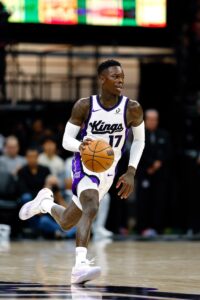 Dennis Schröder: Three years, $44,427,600. Third year partially guaranteed ($4,350,000). Signed using Bird rights and acquired via sign-and-trade from Pistons.
Dennis Schröder: Three years, $44,427,600. Third year partially guaranteed ($4,350,000). Signed using Bird rights and acquired via sign-and-trade from Pistons.- Doug McDermott: One year, minimum salary. Re-signed using minimum salary exception. Waived right to veto trade.
- Drew Eubanks: One year, minimum salary. Signed using minimum salary exception.
- Terence Davis: One year, minimum salary. Non-guaranteed (Exhibit 10). Re-signed using minimum salary exception. Waived right to veto trade.
- Jon Elmore: One year, minimum salary. Non-guaranteed (Exhibit 10). Signed using minimum salary exception.
- Note: Elmore has since been waived.
- Jameer Nelson Jr.: One year, minimum salary. Non-guaranteed (Exhibit 10). Signed using minimum salary exception.
- Note: Nelson has since been waived.
- Jaylin Williams: One year, minimum salary. Non-guaranteed (Exhibit 10). Signed using minimum salary exception.
- Note: Williams has since been waived.
- Dexter Dennis: One year, minimum salary. Non-guaranteed (Exhibit 10). Signed using minimum salary exception.
- Note: Dennis has since been waived.
Trades
- Acquired the draft rights to Nique Clifford (No. 24 pick) from the Thunder in exchange for the Spurs’ 2027 first-round pick (top-16 protected).
- Acquired Dennis Schröder (sign-and-trade) and either the Pistons’, Bucks’, or Knicks’ 2029 second-round pick (whichever is least favorable) from the Pistons in exchange for the Hornets’ 2026 second-round pick (top-55 protected).
- Acquired Dario Saric from the Nuggets in exchange for Jonas Valanciunas.
Draft picks
- 1-24: Nique Clifford
- Signed to rookie scale contract (four years, $15,769,801).
- 2-42: Maxime Raynaud
- Signed to three-year, $5,949,688 contract. First two years guaranteed. Third-year team option.
Two-way signings
- Dylan Cardwell
- Two years, non-guaranteed.
- Daeqwon Plowden
- One year, $75,000 partial guarantee.
- Isaiah Stevens
- Two years, $85,300 partial guarantee (will increase to $318,218 at start of regular season); second year partially guaranteed for maximum two-way protection amount (will increase to 50% at start of regular season).
Departed/unsigned free agents
- Jae Crowder (unsigned)
- Markelle Fultz (unsigned)
- Mason Jones (Perth Wildcats)
- Jake LaRavia (Lakers)
- Trey Lyles (Real Madrid)
Other roster moves
- Exercised team option on Keon Ellis ($2,301,587).
- Exercised team option on Isaac Jones ($1,955,377).
- Withdrew qualifying offer for Isaiah Crawford.
- Waived Terence Davis (non-guaranteed contract).
- Davis was later re-signed to a new Exhibit 10 contract.
Salary cap situation
- Operating over the cap ($154.6MM) and below the luxury tax line ($187.9MM).
- Carrying approximately $182.2MM in salary.
- Hard-capped at $195,945,000.
- Full non-taxpayer mid-level exception ($14,104,000) available.
- Full bi-annual exception ($5,134,000) available.
- Five traded player exceptions available (largest worth $4,968,600).
The offseason so far
Since winning 48 games and ending their 16-year postseason drought in 2022/23, the Kings have had a tougher go of it. They were eliminated in the play-in tournament in a competitive Western Conference in 2023/24, then fired former Coach of the Year Mike Brown after getting off to a disappointing start in ’24/25.
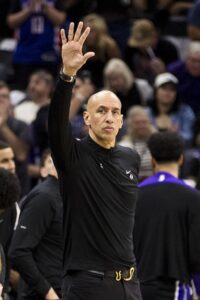 Interim head coach Doug Christie, who was promoted to the permanent role after the season, guided Sacramento to a winning record after taking over for Brown, but it wasn’t enough to get the team back to .500 or beyond the first game of the play-in tournament. And along the way, the Kings traded star point guard De’Aaron Fox after he made it clear he didn’t intend to sign a contract extension with the team.
Interim head coach Doug Christie, who was promoted to the permanent role after the season, guided Sacramento to a winning record after taking over for Brown, but it wasn’t enough to get the team back to .500 or beyond the first game of the play-in tournament. And along the way, the Kings traded star point guard De’Aaron Fox after he made it clear he didn’t intend to sign a contract extension with the team.
In addition to locking in Christie as their full-time head coach, the Kings also named a new head of basketball operations this spring, hiring veteran executive Scott Perry to replace former general manager Monte McNair. Perry was immediately thrown into the deep end in his first offseason in the position — Sacramento entered the summer capped out, without a first-round pick in the 2025 draft, and short on valuable trade chips.
Rather than aggressively trying to reshape the Kings’ roster with limited assets at his disposal, Perry took a relatively conservative approach during his first few months on the job. In the wake of the Fox trade, Sacramento badly needed a point guard, so the new GM went out and got one of the best available options in free agency, working out a three-year deal (only the first two years are guaranteed) with Dennis Schröder. While he was technically a sign-and-trade acquisition, Schröder’s contract is equivalent to the full non-taxpayer mid-level exception.
Schröder is on his eighth team since the start of the 2021/22 season and has been up and down in recent years. In 2024/25, for instance, he got off a great start in Brooklyn, but didn’t play well during a two-month stint in Golden State and wasn’t a whole lot better down the stretch in Detroit. The 32-year-old’s production earlier in his NBA career and on the international stage for the German national team suggest he’s capable of doing far more offensively than he did in 75 games last season (13.1 PPG, .406 FG%), but the Kings won’t be expecting miracles — they just wanted a solid, high-floor veteran to fill a gaping hole on their depth chart.
Besides adding a starting point guard, one of the Kings’ other goals this summer was to get back into the first round of the draft, which they were able to do at a pretty reasonable price. Sacramento acquired the No. 24 overall pick from the Thunder in exchange for a heavily (top-16) protected Spurs 2027 first-rounder that will turn into a pair of second-rounders if it doesn’t convey in ’27.
With that 24th overall pick, the Kings drafted Nique Clifford, a five-year college player who – at age 23 – looks like one of the most NBA-ready players in this year’s rookie class. You could make a case that a team coming off a sub-.500 season should have been looking to roll the dice on a younger prospect with more upside, but trying to find a potential rotation regular is a more realistic goal at No. 24 than hoping to hit paydirt on a future star. Clifford, an All-Summer League first teamer, absolutely looks capable of playing an NBA role.
Long rumored to be a Jonathan Kuminga suitor in a potential sign-and-trade, the Kings were reportedly willing to give up some combination of Malik Monk, Devin Carter, and/or Dario Saric, plus draft assets, in various iterations of offers to the Warriors. And while moving Zach LaVine was essentially a non-starter due to the size of his contract, DeMar DeRozan was also considered a possible offseason trade candidate.
However, Golden State wasn’t moved by Sacramento’s offers for Kuminga, and the Kings didn’t end up working out any other significant deals on the trade market besides their moves for Clifford and Schröder. The only other trade the front office made was a one-for-one swap of Jonas Valanciunas for Saric.
The Kings’ handling of Valanciunas was an example of what happens when a new head of basketball operations with his own ideas about what the roster should look like replaces one that was taking swings in the hopes of saving his job a few months earlier. After giving up two second-rounders to acquire Valanciunas in February, Sacramento traded him for a player who played just 210 total minutes last season and wasn’t effective in his limited role.
Saric is a possible bounce-back candidate and the trade was more about finances than on-court value — swapping out Valanciunas’ $10.4MM salary for Saric’s $5.4MM cap hit ensured the Kings were able to stay under the tax line.
Still, it resulted in a downgrade at the center spot behind Domantas Sabonis, where Saric, Drew Eubanks, and second-round pick Maxime Raynaud are in the mix as potential backups, and it may have been a missed opportunity for the Kings. After they agreed to that trade with Denver, word broke that Valanciunas wanted to return to Europe to play for Panathinaikos. If Sacramento had held onto the veteran center, perhaps the front office could’ve negotiated a buyout that would’ve removed most or all of his cap hit from its books and allowed the team to add a free agent with more value than Saric.
The rest of the Kings’ offseason moves were minor ones. Eubanks and sharpshooter Doug McDermott signed minimum-salary contracts, while Keon Ellis and Isaac Jones had their minimum-salary team options exercised. In general, the summer feels like it could be a prelude to more substantial roster changes in Sacramento, especially if the club continues to hover around or below .500 in 2025/26.
Up next
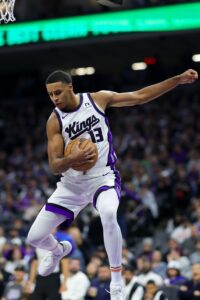 The Kings currently have 13 players on standard guaranteed contracts, plus Ellis on a non-guaranteed deal. That leaves one opening on the projected 15-man regular season roster. Terence Davis, who has played for Sacramento off and on since 2021 and is in camp on a non-guaranteed contract, could be the best candidate to fill it.
The Kings currently have 13 players on standard guaranteed contracts, plus Ellis on a non-guaranteed deal. That leaves one opening on the projected 15-man regular season roster. Terence Davis, who has played for Sacramento off and on since 2021 and is in camp on a non-guaranteed contract, could be the best candidate to fill it.
Still, I won’t be surprised if Davis is waived at the end of the preseason. The Kings don’t have a ton of wiggle room below the luxury tax line, so they may want to maintain the extra cap and roster flexibility that would come with leaving that 15th spot open for now.
It’s also worth noting that Russell Westbrook has been linked to Sacramento since the start of free agency and remains a candidate to end up with the team. I’ve gotten the sense that the Kings would need a clear-cut role – not just an open roster spot – to bring Westbrook aboard, so unless they trade one of their guards after having hung onto Monk and Carter through the offseason, a deal with the former MVP may not be in the cards.
Potential contract extensions for two of the Kings’ most promising young players – former No. 4 overall pick Keegan Murray and defensive stalwart Ellis – are probably more pressing issues in Sacramento than back-of-the-roster machinations. The team has until October 20 to work out a new deal with Murray, whereas Ellis will remain extension-eligible all season. Finding the right price point will be challenging in both cases.
Murray showed a ton of promise as a rookie in 2022/23, averaging 12.2 points per game and making 41.1% of his three-pointers, and he has improved defensively since then. However, his offensive numbers have stagnated — his shooting percentages of 44.4% from the field and 34.3% on three-pointers last season were career lows, as were his 13.0 points per 36 minutes. In order to invest heavily in Murray at this point, the Kings would have to be pretty confident in his ability to take another significant step forward within the next couple years.
As for Ellis, the former undrafted free agent has shown he’s capable of providing a little value offensively after initially establishing himself as a reliable point-of-attack defender. His 8.3 points per game and 43.3% three-point mark last season were career highs. Still, he can’t realistically be relied upon as a go-to play-maker or volume shooter, so the Kings will have to decide just how highly they value his defensive contributions.
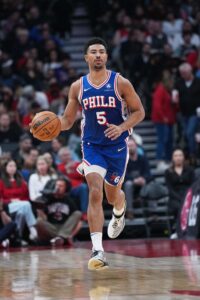
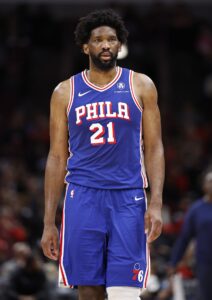 Coming off a massively disappointing year in which the Sixers entered the season as one of the NBA’s title favorites and finished with a 24-58 record, there was some speculation entering the 2025 offseason that the team might look to shake up its roster. President of basketball operations Daryl Morey has never been shy about taking big swings on the trade market, and stars
Coming off a massively disappointing year in which the Sixers entered the season as one of the NBA’s title favorites and finished with a 24-58 record, there was some speculation entering the 2025 offseason that the team might look to shake up its roster. President of basketball operations Daryl Morey has never been shy about taking big swings on the trade market, and stars 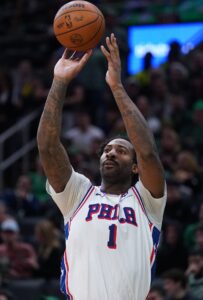 The Sixers are carrying just 14 players on standard contracts, but as we established above, they’re wary of going too much deeper into tax territory, so they’ll likely leave that 15th spot open to start the regular season.
The Sixers are carrying just 14 players on standard contracts, but as we established above, they’re wary of going too much deeper into tax territory, so they’ll likely leave that 15th spot open to start the regular season.
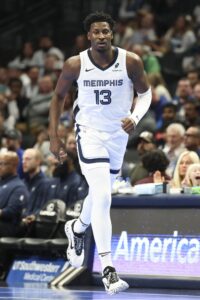 Let’s start with what, in some ways, was the most important decision of the Grizzlies’ offseason — with former Defensive Player of the Year
Let’s start with what, in some ways, was the most important decision of the Grizzlies’ offseason — with former Defensive Player of the Year 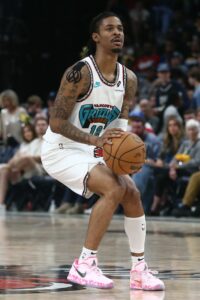 The Grizzlies have 15 players on guaranteed salaries and three on two-way deals, so their regular season roster looks pretty much set. Two-way moves are always a possibility during the preseason, but
The Grizzlies have 15 players on guaranteed salaries and three on two-way deals, so their regular season roster looks pretty much set. Two-way moves are always a possibility during the preseason, but 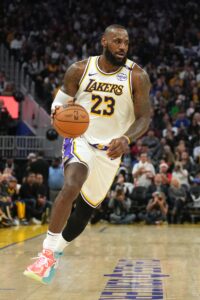 James will turn 41 before the calendar year is over, but he’s not the only NBA player in his 40s like he was a year ago. His good friend
James will turn 41 before the calendar year is over, but he’s not the only NBA player in his 40s like he was a year ago. His good friend 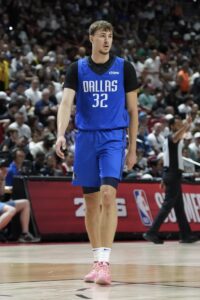
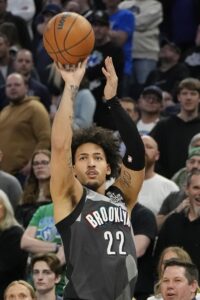 While teams have until Oct. 20 to set their regular season rosters, many clubs will make their final cuts on or before Saturday, October 18. That’s the final day that a team can waive a player on a non-guaranteed contract and avoid paying any of his salary.
While teams have until Oct. 20 to set their regular season rosters, many clubs will make their final cuts on or before Saturday, October 18. That’s the final day that a team can waive a player on a non-guaranteed contract and avoid paying any of his salary.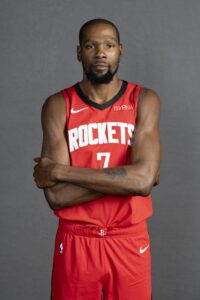 For instance, Rockets forward
For instance, Rockets forward 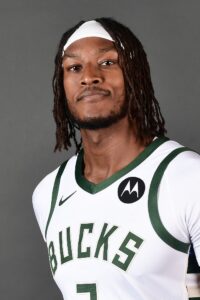
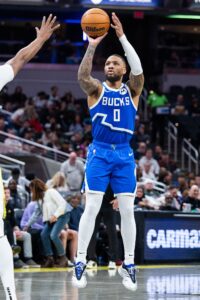 But the Bucks’ front office had plenty of reason to be bold this summer. The team had just been eliminated in the first round of the playoffs for a third straight year, and star point guard
But the Bucks’ front office had plenty of reason to be bold this summer. The team had just been eliminated in the first round of the playoffs for a third straight year, and star point guard 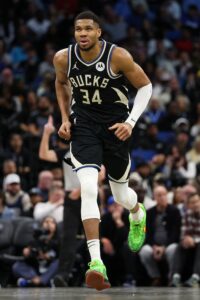 If we were evaluating the roster purely based on projected performance, Thanasis would be a logical release candidate as well, but it’s hard to imagine the Bucks waiving Giannis’ brother while they’re doing all they can to convince him to remain in Milwaukee long-term.
If we were evaluating the roster purely based on projected performance, Thanasis would be a logical release candidate as well, but it’s hard to imagine the Bucks waiving Giannis’ brother while they’re doing all they can to convince him to remain in Milwaukee long-term.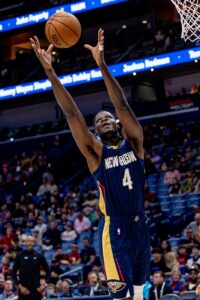
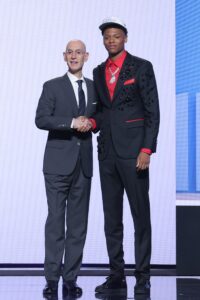 So, despite entering the offseason with one of the NBA’s most favorable salary cap situations, the Jazz essentially sat out of free agency. They completed three Exhibit 10 signings, including one with former lottery pick
So, despite entering the offseason with one of the NBA’s most favorable salary cap situations, the Jazz essentially sat out of free agency. They completed three Exhibit 10 signings, including one with former lottery pick 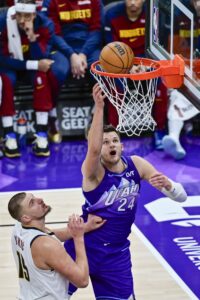 Although Bamba isn’t eligible for a two-way contract, the other two Exhibit 10 signees –
Although Bamba isn’t eligible for a two-way contract, the other two Exhibit 10 signees –